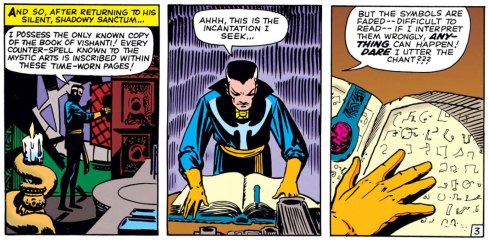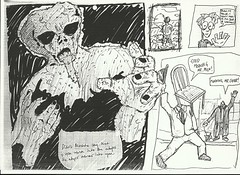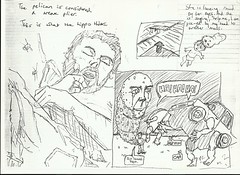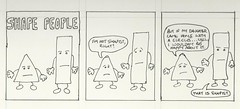 Fictional books have a special sort of attraction. Who wouldn’t want to peruse Borgesian infinite libraries, or wander through the halls of unwritten books stored in the library of the Sandman (Alice’s Journey Behind the Moon by Lewis Carroll, anyone?). Perhaps the most mysterious of such book is the Necronomicon.. It’s a truism to note that much of H. P. Lovecraft’s lasting influence is the deep mythology woven into his work. The Cthulhu mythos has outlived its creator (or medium? host-body?!), becoming a source of inspiration for numerous other writers as well as practising magicians. Chaos magicians such as Phil Hine have worked the Great Old Ones of the Cthulhu mythos into their magickal rituals, while Kenneth Grant, former secretary of Alisteir Crowley, argued for a fundamental magical reality to Lovecraft’s fictions that even the author himself was unaware of.
Fictional books have a special sort of attraction. Who wouldn’t want to peruse Borgesian infinite libraries, or wander through the halls of unwritten books stored in the library of the Sandman (Alice’s Journey Behind the Moon by Lewis Carroll, anyone?). Perhaps the most mysterious of such book is the Necronomicon.. It’s a truism to note that much of H. P. Lovecraft’s lasting influence is the deep mythology woven into his work. The Cthulhu mythos has outlived its creator (or medium? host-body?!), becoming a source of inspiration for numerous other writers as well as practising magicians. Chaos magicians such as Phil Hine have worked the Great Old Ones of the Cthulhu mythos into their magickal rituals, while Kenneth Grant, former secretary of Alisteir Crowley, argued for a fundamental magical reality to Lovecraft’s fictions that even the author himself was unaware of.
At the heart of the Cthulu mythos lies the Necronomicon, a magical grimoire written by the “Mad Arab” Abdul Alhazred, a worshipper of Cthulhu and Yog-Shoggoth. Containing an account of the Old Ones, their history, and various means for summoning them, the Necronomicon had a complex history, as outlined by Lovecraft himself in the History of the Necronomicon. Despite Lovecraft’s private protestations that the book was a product of his imagination alone, the Necronomicon has been remarkably persistent in manifesting itself in the “real world” too. If you were to visit the University Library of Tromsø, Norway, for instance, you would find listed a 1994 version of the Necronomicon, attributed to one Petrus de Dacia, although the document is ominously listed as “unavailable”. Or you might be able to track down one of the 348 editions published by Owlswick Press in 1973, written in the indecipherable, apparently fictional language known as “Duriac”. More easily available is what has become known as the “Simon Necronomicon”, a translation of the “real” Necronomicon by the pseudonymous Simon. The blurb rightly warns the reader that this is indeed, “potentially, the most dangerous Black Book known to the Western World“. Also easily available is 1979 Necronomicon edited by George Hay, with an introduction by noted occult scholar Colin Wilson.
The Necronomicon is not above intruding on universes other than our own either, having made several appearances in both the Marvel and DC Universes. There is even a comic book about how the Necronomicon came to be written. But while the Necronomicon is perhaps the most legendary fictional (OR IS IT?!) book in Western literature, there is only one book of true magical power and import in the world superhero comics; The Book of Vishanti! Continue reading




